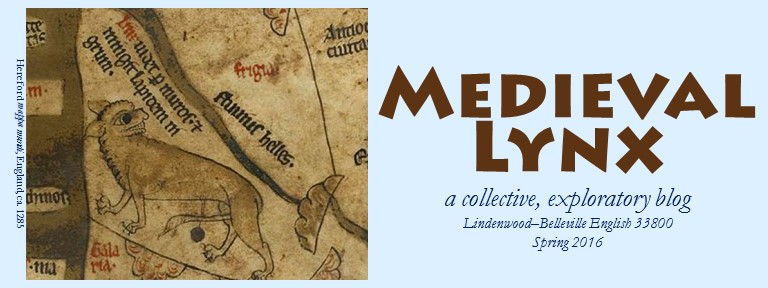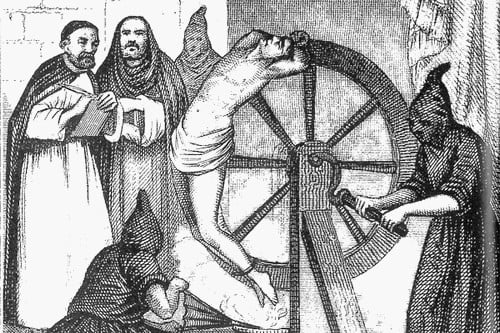Sunday, March 20, 2016
A "Lovely" Wedding Night for Sir Gawain
So here is kind of what I pictured Dame Ragnelle to look like when we were reading.
I made her more into a cartoon character than an actual real person. I put her in undergarments cause that was probably the best way that I could think to do it. Let me know what you think of it and if there's anything you think I could make a little better because I don't think shes perfect but, I think that I got all the qualities that we discussed in class. I also found a picture of food that I could lay behind her since she was able to eat more than any other man.
Saturday, March 19, 2016
Greed in Middle Ages vs Now
According to Laura Stokes from greed was different in the middle ages. In the middle ages it was alright for people to be rich as long as they were not being selfish about it. Being selfish was considered to be wrong. In this article Laura explains that people having "acceptable greed" has changed in the last 500 years.
http://news.stanford.edu/news/2012/august/greed-middle-ages-080212.html

Now on wall street, self promoting behavior is displayed all the time. If people were like this in the middle ages they might have been killed for behaving in that manor. Today being greedy is almost normal. people are constantly wanting to have the best, and receive more money than the person next to them. People today I believe are more boastful. People today want to show off what they have. I think that people wanted to do this in the middle ages but do not because of fear of consequences.
"The heart of the arguments of the people I'm researching," she explained, "are socially indigenous value sets – not from an outside institution" (Laura Stokes 2008).
And, while quite different, "these value sets are present in today's society," said Stokes. Despite a heavy emphasis on greed in modern business culture, we still value social responsibility. As Stokes pointed out, "We admire most our great philanthropists who can balance both" (Laura Stokes).
I found these quotes interesting. I mostly liked the second quote because she explains that indigenous value sets still take place today. I also like that she said we value social responsibility because i believe this to be true today. For example we like the people that can be rich and yet responsible about it. We like these people because they are rich yet know how to balance having money and social responsibility. Let me know what you think about this news journal I found.
Friday, March 18, 2016
Peasants revolt
When one thinks of medieval heroes I would think that Robin Hood, or King Arthur would come to mind. However few who are not well versed in medieval history would think of Wat Taylor and Jack Straw. These were two of the men who lead the Peasants revolt in 1381.
The gist of the story is that the Black Plague killed a whole lot of people. Because of all the peasant deaths many Lords were short on laborers and so they started encouraging peasants to move from their village to seek a better paying job with them. Well it was illegal for peasants to move without their current Lord's permission. She because of the competing between Lords to get the now sparse peasants a bunch of strict laws were made and enforced. These were called the Statute of Laborours.
In addition to that a new poll tax was introduced, and that was absolutely the last straw. So Taylor and Straw and 60,000 men marched on London with a petition to be free basically. They wanted to be able to provide food for their families, make a living wage, and build homes.
It really did not go as planned. King Richard II was 14, but he agreed to talk to them, however he could not get to them in a timely manor, so everyone started rioting. When Wat actually met the King, he was killed, and the rest of the leaders were killed too. Their demands were not met.
I do not know if Taylor and Straw could be considered heroes. They started out with such noble goals, but in the end turned into criminals. They used violence because they were too impatient to see peace work it's magic. I wonder if their demands would have been met if they had not turned violent. We see this kind of thing far too often even in our modern world. Perhaps we should learn a lesson from the Peasant's Revolt.
Source
http://www.medieval-life-and-times.info/medieval-history/the-peasants-revolt.htm
The gist of the story is that the Black Plague killed a whole lot of people. Because of all the peasant deaths many Lords were short on laborers and so they started encouraging peasants to move from their village to seek a better paying job with them. Well it was illegal for peasants to move without their current Lord's permission. She because of the competing between Lords to get the now sparse peasants a bunch of strict laws were made and enforced. These were called the Statute of Laborours.
In addition to that a new poll tax was introduced, and that was absolutely the last straw. So Taylor and Straw and 60,000 men marched on London with a petition to be free basically. They wanted to be able to provide food for their families, make a living wage, and build homes.
It really did not go as planned. King Richard II was 14, but he agreed to talk to them, however he could not get to them in a timely manor, so everyone started rioting. When Wat actually met the King, he was killed, and the rest of the leaders were killed too. Their demands were not met.
I do not know if Taylor and Straw could be considered heroes. They started out with such noble goals, but in the end turned into criminals. They used violence because they were too impatient to see peace work it's magic. I wonder if their demands would have been met if they had not turned violent. We see this kind of thing far too often even in our modern world. Perhaps we should learn a lesson from the Peasant's Revolt.
Source
http://www.medieval-life-and-times.info/medieval-history/the-peasants-revolt.htm
Thursday, March 17, 2016
Pilgrimages to Jerusalem during the Middle Ages
Jerusalem was the city where Jesus died, resurrected, and ascended into heaven, thus it became a city to visit for Christian, especially European Christians. During the Middle Ages, such a pilgrimage was expensive and lengthy. Many of these pilgrimages were by boat and often treacherous because boats often got lost and/or shipwrecked. There were many poems even written about how treacherous and often terrible the journey itself (Such as The Pilgrims Sea-Voyage and Sea-Sickness).
One interesting fact is that once travelers reached Palestine, the supervision was transferred into the Franciscans of the Monastery of Mount Zion, and it was the only Catholic organisation that was allowed by the Islamic rulers at the time.
One interesting fact is that once travelers reached Palestine, the supervision was transferred into the Franciscans of the Monastery of Mount Zion, and it was the only Catholic organisation that was allowed by the Islamic rulers at the time.
There were many reasons to take the dangerous voyage to Jerusalem. Many reasons were to see the holy land and see the place where Jesus died for Christian's sins, as well as for the adventure and curiosity to see a city that so many considered holy and righteous in and of itself. Also, non-saint souls, according to Medieval Christianity, stay in Purgatory for a period of time before ascending into heaven. Pilgrimage to Jerusalem was said to shorten the time in Purgatory for the souls of the dead and for those who took the journey.
Some were sent to Jerusalem as punishment. They were sent to seek penance, but only for severe crimes, so it wasn't common.
Social status and prestige was another (probably less holy) reason. Those who accomplished the journey and returned were held in higher regard socially. Knights were often encouraged to go to show off their knight-hood and encourage them into crusades. Nobles were most often pilgrims because of the cost of the journey, most of whom being men. Women were considered the 'more sinful of sexes' and 'inherently sinful' (there was long debate in the Catholic church whether women even possessed souls to ascend to heaven). They were allowed so long as they were quiet, but most were quiet anyway because the journey was so difficult anyway.
Sources:
http://memo.hum.uu.nl/jerusalem/pages/pilgrimage.html
https://edelmulcahy.wordpress.com/
Wednesday, March 16, 2016
Drawing of Dame Ragnell
I decided to take up Dr. Mann's offer of a drawing of our hideous maiden Dame Ragnell. I am no artist but I tried to accurately depict the traits of her that we discussed in class. Hope you all enjoy it!
Monday, March 14, 2016
U.S. Politics Is Returning to the Middle Ages
As many of you know Donald Trump is running in the 2016 presidential race. In the beginning of the article the author states that Trump provides viewers with showmanship and theatrics, which relates to the plays and spectacles that we just learned about in the town of York. While we were studying the Crucifixion, Dr. Mann showed us an example of how this story would have been played out on the streets by actors in order to entertain the audience. Is Trump possibly doing the same by using theatrics to win voters?
Trump also stated, "All I know is this: We're living in Medieval times." "We're living in an unbelievably dangerous and horrible world."
Gini Graham Scott explored Trump's statement and attempted to answer the question of, "Is the violence and economic inequality that pervades the world today analogous to the peasant uprisings and rampant warfare many associate with the Middle Ages?"
In her new book, "The New Middle Ages," Scott compares our country's widespread economic inequality to what was seen hundreds of years ago in Europe. She studied numerous television shows that dealt with the middle ages, the Tudors, and monarchies and noticed how the wealthy lifestyle was being portrayed in regards to the lives that peasants were living at that time. An example that Scott used to explain this inequality is the Kardashian family. We all know that this family is very wealthy and we even get to see how they live because they have an entire show on the E network. The people living these lavish lifestyles seem to be running the conversations we have and with full access to the Internet, we are able to see how different these people live from others who don't have as much money as the Kardashian family does.
Through social media, television, and the news we can clearly see how "the other half" lives in our world. They have lavish lifestyles, drive expensive cars, live in mansions, and they have people who work for them. While the other half of society may have to use public transportation to get place to place or may not be so fortunate to have a roof over their head. I took this article and related it to "The Wedding of Sir Gawain and Dame Ragnelle." In order to win Sir Gromer's challenge King Arthur must find out what women desire most. When he decides to give up he encounters Dame Ragnelle and because she isn't beautiful, King Arthur has his nephew marry her so he can win Gromer's challenge. This example clearly shows that the king used his power over his nephew in order to get his way.
My question for everyone is, Do you think our society's economic equality match those of the middle ages? Why or why not? I am very curious to hear your thoughts! The link to the full article is provided below.


Scott said she studied Tudor history to help show how lavish lifestyle was for the royals in the middle ages. Here is Hampton Court Palace where King Henry the eighth liked to spend most of his time!
http://www.usnews.com/news/the-report/articles/2015/11/19/us-politics-is-returning-to-the-middle-ages
Trump also stated, "All I know is this: We're living in Medieval times." "We're living in an unbelievably dangerous and horrible world."
Gini Graham Scott explored Trump's statement and attempted to answer the question of, "Is the violence and economic inequality that pervades the world today analogous to the peasant uprisings and rampant warfare many associate with the Middle Ages?"
In her new book, "The New Middle Ages," Scott compares our country's widespread economic inequality to what was seen hundreds of years ago in Europe. She studied numerous television shows that dealt with the middle ages, the Tudors, and monarchies and noticed how the wealthy lifestyle was being portrayed in regards to the lives that peasants were living at that time. An example that Scott used to explain this inequality is the Kardashian family. We all know that this family is very wealthy and we even get to see how they live because they have an entire show on the E network. The people living these lavish lifestyles seem to be running the conversations we have and with full access to the Internet, we are able to see how different these people live from others who don't have as much money as the Kardashian family does.
Through social media, television, and the news we can clearly see how "the other half" lives in our world. They have lavish lifestyles, drive expensive cars, live in mansions, and they have people who work for them. While the other half of society may have to use public transportation to get place to place or may not be so fortunate to have a roof over their head. I took this article and related it to "The Wedding of Sir Gawain and Dame Ragnelle." In order to win Sir Gromer's challenge King Arthur must find out what women desire most. When he decides to give up he encounters Dame Ragnelle and because she isn't beautiful, King Arthur has his nephew marry her so he can win Gromer's challenge. This example clearly shows that the king used his power over his nephew in order to get his way.
My question for everyone is, Do you think our society's economic equality match those of the middle ages? Why or why not? I am very curious to hear your thoughts! The link to the full article is provided below.


Scott said she studied Tudor history to help show how lavish lifestyle was for the royals in the middle ages. Here is Hampton Court Palace where King Henry the eighth liked to spend most of his time!
http://www.usnews.com/news/the-report/articles/2015/11/19/us-politics-is-returning-to-the-middle-ages
Sunday, March 13, 2016
Medieval influences on fairytales?
As I was reading “The Wedding of
Sir Gawain and Dame Ragnelle,” I became extremely interested in the Dame and
her story and how I recognized some of the traits she portrays and things that
are described in the story and related them to some fairytale’s we have in
today’s society. The way she is described as something extremely unattractive
yet, she has all the insight the King needs to survive if he gets Sir Gawain to
marry her, kind of like how Ursula the sea witch from Ariel says if Ariel gives
Ursula her voice, she will make her human. Dame Ragnelle gets married to Sir
Gawain and when they do their ‘marriage activities,’ she becomes beautiful. Sort
of like how in Snow White and the 7 Dwarfs, the prince has to kiss Snow White
to wake her from the sleep she is cursed into. The fact that Dame Ragnelle
would stay beautiful for him from dusk until dawn forever, because he gave her
the CHOICE to choose when she wanted to be beautiful, is a very uncommon thing
to do during this time because women didn’t have much choice of anything. Even
though, he originally married her because he was loyal to the King and wanted
nothing more than to have his king survive, it turned into something more
beautiful than that. This sounded to me like Beauty and the Beast when Belle
goes to rescue her father from the jail and bamb Belle gets locked away in the
castle with the Beast! Here comes the invention of my most favorite fairytale.
I feel as if there is a lesson to be learned
from the Dame and one basic life lesson/saying that I’m sure everyone has heard
is “Don’t judge a book by its cover.” I feel as if this was a lesson, as the
reader, we were to take away from the story. Does that saying really date that
far back? This is also something we see in the Disney tale of Beauty and the
Beast! Say What? Except, in Beauty and the Beast, clearly the Beast is the male
figure. We rarely see women portrayed as the “ugly one”.
What exactly is her goal in this
story? Is it as innocent as giving the king his answer to survive? Or, is it as
selfish as to getting the curse lifted that her evil step mother placed on her?
Some of these aspects we also see in Snow White and Cinderella! Snow White is
cursed by eating an apple, and Cinderella is turned into her stepmother and
stepsister’s slave practically and marries the prince; turning her from a maid
into royalty—rags to riches type thing, (Ragnelle even has the word rag in it,
coincidence? I think not) similar to how Sir Gawain’s actions change Dame
Ragnelle into something more beautiful than he ever imagined possible. It’s like Walt Disney took some of the characters
from the Medieval writings and created different versions of them! I thought it
was a farfetched idea that maybe, just maybe these fairytales’ we see today
didn’t always have a happy ending. Anyone else have thoughts on that? Tell me
guys, how far out of the box did I go?
Saturday, March 12, 2016
Lanval: What is he doing with his life?
In class on Thursday (March 10th) there was a lot of talk about the maiden that Lanval falls in love with, but there was not a whole lot of talk about the man himself. There really did not seem to be much in the way of interest about Lanval, but looking closer at him, he is the Ideal Man. Not only is he desired by a beautiful, wealthy woman, making him the envy of men, but he is also the ideal man for women as well. Lanval knew that his lady did not want him to speak about her and while he did slip up, he was only complimenting her beauty. Lanval stays loyal to his lady and turns down the queen. Even while imprisoned he remains loyal to his lady.
While there was a lot of discussion about Lanval's mistress, he was glossed over, but why? Lanval is loyal, supposedly good looking and he is not poor, but he is not interesting. I found it quite interesting that there was not a lot of talk about him because he didn't have any lasting drama. The king, queen and the maiden all were embroiled in their own schemes and plans that Lanval was forgotten because all he could do was sit in jail. The idea that the perfect man was not quite enough to even keep Marie de France's focus is also interesting. Lanval is supposed to be the knight in shining armor, but he is the one that needs saved; he needs other people's drama and turmoil to make himself exist.
No wonder the king left him out of the gifting hour.
Enjoy these comic strips as much as I did.
Images found at: http://litbrick.com/comic.php?date=2010-05-06
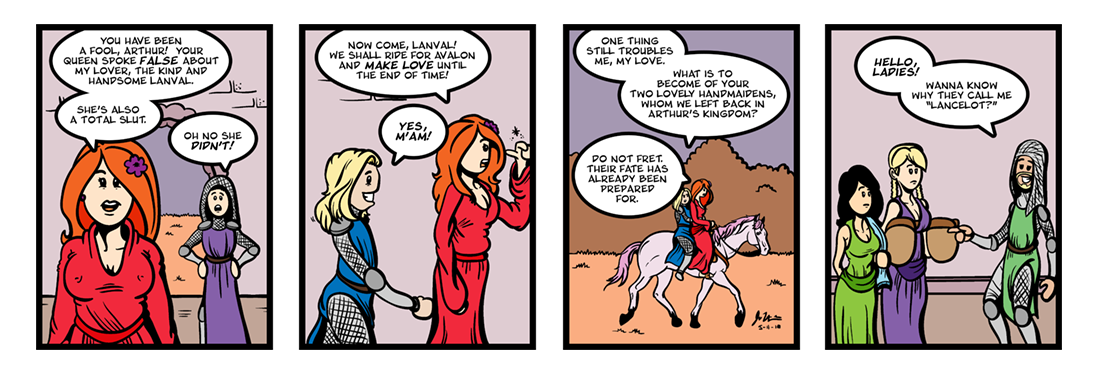
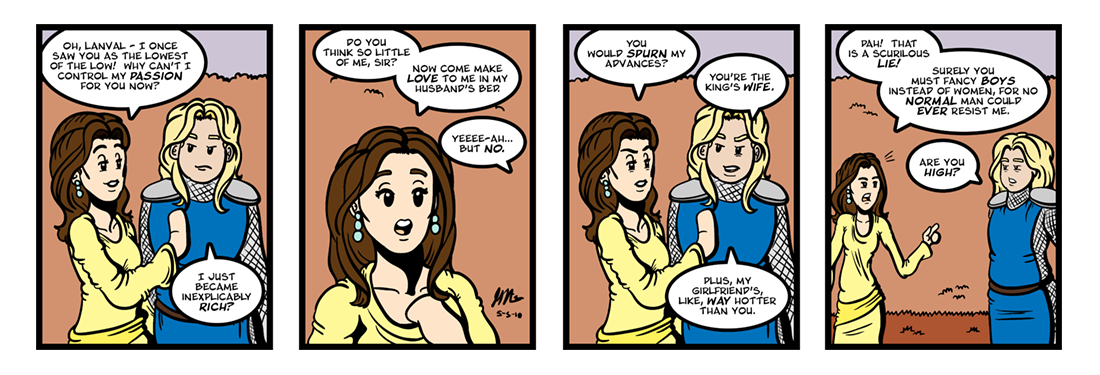
While there was a lot of discussion about Lanval's mistress, he was glossed over, but why? Lanval is loyal, supposedly good looking and he is not poor, but he is not interesting. I found it quite interesting that there was not a lot of talk about him because he didn't have any lasting drama. The king, queen and the maiden all were embroiled in their own schemes and plans that Lanval was forgotten because all he could do was sit in jail. The idea that the perfect man was not quite enough to even keep Marie de France's focus is also interesting. Lanval is supposed to be the knight in shining armor, but he is the one that needs saved; he needs other people's drama and turmoil to make himself exist.
No wonder the king left him out of the gifting hour.
Enjoy these comic strips as much as I did.
Images found at: http://litbrick.com/comic.php?date=2010-05-06


Thursday, March 10, 2016
Reaction to Lanval
One of the things I enjoy about the Marie de France stories is that they are very character driven. On my initial read I actually liked Lanval as a character and did not get this sense of naivety that others were suggesting but I did get a huge sense of neglect. However, I never really saw that naivety but I did see a lot of loneliness in his character and that lead me to imagine him as a better person for several reasons. Lanval was described as having great skills, beauty and courage but also for his generosity. This is quite the opposite characteristic that we’ve seen of most of the men in the readings so far. Most of the men so far have been braggarts and very interested in improving their own lives standing. Then there is Lanval who is generous, which would mean he is humble. He does not even ask the king for rewards, which does make him sad but he never asks which suggests there is a part of him that believes he does not outright worthy enough to receive rewards. He would prefer them freely given by those who do see him worthy (namely Arthur who forgets about him) which is exactly what he gets with the maiden.
Which I think is where the argument that he is naive comes from. Logically, if a maiden just appears from nowhere knowing things impossible for her to know and asking for secrets to be kept said maiden shouldn't be trusted. However, Lanval is a lonely character; I honestly don't think he would have known better as he had no one else that really cared for him throughout the entire story. Even when he misspoke to the queen, he did it to defend himself and even at that he had to be provoked into defending himself. He might be naive, but it seems to have more to do with not having anyone to guide him in the right direction rather than just an overall character trait.
Which I think is where the argument that he is naive comes from. Logically, if a maiden just appears from nowhere knowing things impossible for her to know and asking for secrets to be kept said maiden shouldn't be trusted. However, Lanval is a lonely character; I honestly don't think he would have known better as he had no one else that really cared for him throughout the entire story. Even when he misspoke to the queen, he did it to defend himself and even at that he had to be provoked into defending himself. He might be naive, but it seems to have more to do with not having anyone to guide him in the right direction rather than just an overall character trait.
Wednesday, March 9, 2016
The Anchoress
Since we only briefly talked about
being an anchoress in class, I wanted to do some more research on who exactly
they were and why they chose to live in such conditions rather than in
religious communities.
I found out that anchoress’ lived in
extreme poverty and usually ate only vegetarian food. Since their lives are
devoted to God, similar to a nun or monk, most of their day is spent praying
and giving advice to people who come seeking it. These women were seen to the
public as people who gave advice and were willing to pray for and with the
people who came to see them.
Since arranged marriages were such a
large part of the cultural norm at this point, I believe many people chose to
be anchoress’ to avoid marrying someone who was being forced upon them.
This is the picture I found online of the rooms the anchoress live in.
Does anyone else have any ideas of why these people would want to live here instead of in abbeys or monasteries?
Reflection on The York Crucifixion
While reading The York Crucifixion all I could do was think about how awful everything that was going on was. I am familiar with the story about how Christ was put up on the cross,but this made the story much more in detail than I remember when I first heard about it. The way that the story goes into detail about all the little things that the soldiers did when they were getting him ready gives you a very vivid image in your mind. While reading the parts about how they were stretching his body to get him where they needed to nail his hands in made me cringe. This reading also shows how kind and forgiving the son of God is, he prayed for these soldiers 3 times, he wanted to show them that even after all they had put him through they could still be forgiven and be in heaven with him. This would be an example that someone who was teaching about Christianity would want to tell to people. It would give them a way to show that even the best people are put through trials, these trials are what show who is worthy and who is not. It could be a way to justify if something bad has happened in a persons life and that was what was keeping them from following someone who is supposed to be protecting them from all the bad in life.
Woe to the Nightingale
 |
| A painting of a medieval nightingale. Retrieved from: http://bestiary.ca/beasts/beast546.htm |
Marie de France's poetry has easily become a favorite. She is a master of weaving stories of which the reader will crave more.
In her lai, Laüstic or The Nightingale, there are two lovers who cannot be together: a young knight who is brave, honorable, and generous and a woman who is courteous, wise, and gracious. Similar to other tales of forbidden love, the woman is married to another man.
Marie de France made it a point to describe the woman as having a deep sense of self-respect, which is probably why the woman felt the freedom or drive to follow her heart and seek out the young knight.
In the story, she would meet with her lover late at night and when she would return her husband would ask where she has been. Her answer was simply, she was listening to the nightingale.
The nightingale became a symbol and the embodiment of the lovers' relationship.
During the middle ages nightingales were known for singing day and night. They would sing to pass the time during the night, but at the break of dawn they would sing so enthusiastically that he or she would nearly die. Nightingales were considered to be poets or something that inspires human poets.
In the poem, the entrapment and the death of the nightingale symbolizes the ending of the lovers' relationship. The lovers treat the nightingale's body delicately, sacredly, and as something that will always be treasured.
The way in which the nightingale is treated convinces me that the lovers' relationship was not a passing fancy. Rather, it was a love the two treasured and believed to be sacred; a love that will never cease but will continue on even thought the two must remain apart.
The poem leaves me with the sweetest kind of sadness. It is so rare to find those two things working together in order to affect the reader in such a way as this.
What are your reactions? Did you have an emotional response as well? If so please share!
Below is a link to a nightingale singing, in case you have never heard one before.
https://www.youtube.com/watch?v=INzqozVbYL8
Tuesday, March 8, 2016
Books of Hours are Beautiful
At the end of today's class Dr. Mann began to show us and describe the "Books of Hours". Just last Friday Sara and I's Special Topics class that covers the British Isles took a field trip to Wash U's library to examine authentic medieval texts with our own eyes. While there were a lot of different texts set up for us to examine, the Book of Hours that was present took my breath away. I couldn't believe the detail that was on each page. At every flip of the page my eyes met another beautiful illustration that depicted various biblical stories. On the opposite side of each illustration were the most elaborate hand written passages I had ever seen. The pages were so beautifully detailed I almost couldn't believe that everything written and drawn on the pages was done by hand. In the book that was present in Wash U's library there is real gold highlighting different letters in the passages and all the Saints depicted in the illustrations have authentic gold halos surrounding their heads. I sat there and contemplated how long it must have taken to create one of these texts from start to finish as I examined each page.
Originally, these texts were created by monks and nuns so that lay people (people who aren't authorities of the church) could read them and pray in their own homes. When these books initially began getting produced in the 1200's they went exclusively to wealthy upper class member's society. It wasn't until 300 years later in the 1500's that they began getting produced by printing shops, in which case they began getting into the hands of the middle class as well. However, the monks and nuns created the most elaborate books. The books that they created are arguably the best of examples of medieval book art available to us today, after all, the Book of Hours that I was given the privilege to examine at Wash U was the most beautifully decorated book I've ever seen in my life and it was created over 500 years ago.
Crusades
There is a comparison that can be made between the Christian crusades of the 1100-1200's and the Iraq and Afghanistan war that is still currently going on in the middle east. The Seljuk Turk's who were Muslim attacked the Byzantine empire who where Christian people, and took over their land. The pope of the time decided to organize the crusades to go in and take the city back over so that the Christian people could still take there pilgrimages to the city of Jerusalem every year. The crusade to take back the Christian land failed which did not settle well. The comparison to the war that is going on in the middle east today is the exact same story line except the Christian said is winning. The reason i say Christian side is because the United States is founded on Christian beliefs since England was the base model foundation of our country. The reason its the same time line of events that happened during the 1100's and now is that The US was attacked by Muslim terrorist. Then the US decides to go into the middle east to basically take over so that the Muslim people can have their country back with a new reform of the government from corruption. This just shows how history can repeat itself if people are not careful.
My question to you is how does this make you feel about how easy history can repeat itself?
Saturday, March 5, 2016
Castles and Culture
I have always found castles interesting. As a child I have
grown up watching movies with prince and princesses that live in them like
Cinderella. I have always wanted to visit one and stay the night because I find
them so beautiful and fascinating. We have not really talked about castles in
class yet. Castles seem to play a role in mediaeval culture. I found many things interesting when
researching more about castles.
Castles are symbols for mediaeval lords. Knights lived in the
castles kind of as a safe base.
It was more than a home. It was a community. It had everything
people needed for a night’s stay. I found this interesting because in the
middle ages people usually do not help others out as much. having a leader that
is protecting made my heart melt. It shows that they actually care about their kingdom/
people.
Castles were mostly build to protect families when war
happened. Again it was a safe place to go no matter what. I wish we had a place
like that. Even if we had somewhere that we could visit I would be in love.
http://historymedren.about.com/od/dailylifesociety/u/Life_and_Culture.htm
https://www.google.com/search?q=castle&source=lnms&tbm=isch&sa=X&ved=0ahUKEwiriNTo46rLAhWMlx4KHUcpDWoQ_AUIBygB&biw=1280&bih=566#tbm=isch&q=castle+middle+ages&imgrc=7zWTDeB3X-TCqM%3A
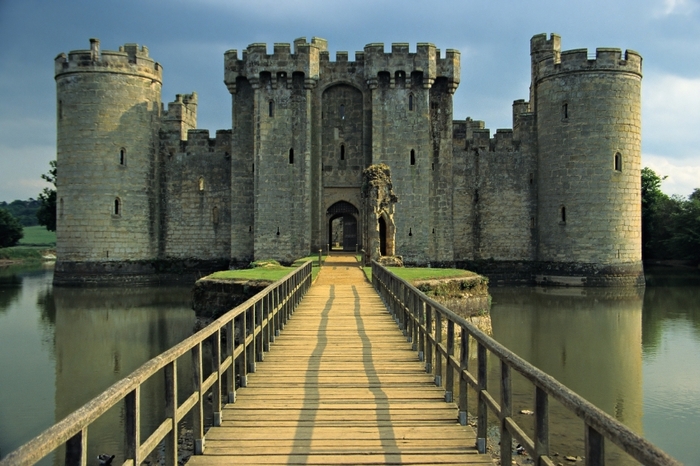
This picture is perfect in what I think of when someone says
castle. It even has the bridge and water around it. Castles are linked to culture because they
are constantly changing. Castles were mostly used in war but were perfectly
thought out. Obviously they kept changing and improving like everything does. I
just think they amazing to look at. i would love to visit one. Actually there
is a play castle for children called castle park that is twenty miles away from
where I live. I have brought my family there before and even though it is for
kids I still enjoy going through it. Let me know what you all think about the
culture of castles and the middle ages.
Friday, March 4, 2016
Arthur and Merlin
I have always been fascinated by King Arthur legends. It started when I was really young reading the Magic Tree House books. In those books Morgan le Fey was the good guy, who enchanted a tree house to travel through time. Then I watched the Sword in the Stone for the first time and loved King Arthur, I mean, he was just a scrawny little kid. But that scrawny little kid pulled the sword from the stone and became king. Then I saw Quest for Camelot. In that a Knight gone rogue kills a girl's father and years later tries to use her and her mother to bring Camelot down, but he fails. Years later I read a book from the library in my home town that depicted Arthur when he was a kid and how his friendship and tutelage under Merlin started. That was the first time I had heard of King Uther having Merlin help him seduce Igraine (who was married to another man) in exchange for giving to Merlin his son (Arthur). Which is kind of messed up. I've also seen Mordred and Morgause depicted in Batman cartoons where Morgause seduces a Knight to betray King Arthur and help put Mordred on the throne. But in the end the Knight sees the error of his ways but as punishment for his betrayal Merlin curses him to be tied to the demon Etrigan.
however my favorite depiction of the King Arthur legends in pop culture would have to be BBC's Merlin. Instead of following Arthur this one follows more about Merlin (as the title suggests). It does change the story from the one that I have heard called the "original" story. In this one Arthur is raised as a prince in a world where magic is outlawed. This makes it very dangerous for Merlin who was born with a natural instinct for magic. Through various circumstances Merlin is made Arthur's servant and helps shape the future king through his friendship and wisdom. Not to mention he saves Arthur's life way too many times. However he has to do it in secret because his magic is outlawed.
I don't know what it is about King Arthur and the Knights of the Round table that fascinates me so. It could be the brave knights, the daring adventures, the love triangles, or the magic and mystery. One thing is for sure, I'm not the only one who has been captivated.
however my favorite depiction of the King Arthur legends in pop culture would have to be BBC's Merlin. Instead of following Arthur this one follows more about Merlin (as the title suggests). It does change the story from the one that I have heard called the "original" story. In this one Arthur is raised as a prince in a world where magic is outlawed. This makes it very dangerous for Merlin who was born with a natural instinct for magic. Through various circumstances Merlin is made Arthur's servant and helps shape the future king through his friendship and wisdom. Not to mention he saves Arthur's life way too many times. However he has to do it in secret because his magic is outlawed.
I don't know what it is about King Arthur and the Knights of the Round table that fascinates me so. It could be the brave knights, the daring adventures, the love triangles, or the magic and mystery. One thing is for sure, I'm not the only one who has been captivated.
Thursday, March 3, 2016
Medevilists.net Blog Site
Medievalists.net is a Blog Site dedicated to Medieval history and really any association thereof. They review Medieval-based movies, books, etc. They also have many other social media accounts such as Facebook, Twitter, and Google+. They even have their own magazine!
The founders and keepers of the blog are a couple of historians from Canada and England. Peter Konieczny is a librarian and historian with a Master's in the subjects while Sandra Alvarez has an honorary B.A. in Medieval Studies and works in social media coordination. They founded the site because they were dissatisfied with other medieval blogs that never updated.
There is a lot to this site. Many scholarly articles with many references to other works and all of the articles are written by those with Medieval History credentials, mostly the founders. There are a variety of articles, ranging from art, cartography, recipes, and history. Each article in of itself is a fascinating read, and the external references along with the internal credentials cement their accuracy. You're not wasting your time.
The website itself also looks nice. The home page is packed with information and has an easy to read scheme and nicely placed menu bar. Social Media, their magazine, and popular articles are easy to find and use. Also, as the blog promises, it is constantly updated. My one criticism is it took me a few clicks to find their direct contact page, and there is no comments option on posts. Also, they don't seem to utilize the tagging system very efficiently.
All in all, it is a very great website to obtain Medieval cultural context for nearly every subject, or just a great read if you are fascinated by Medieval history and their culture.
http://www.medievalists.net/
The founders and keepers of the blog are a couple of historians from Canada and England. Peter Konieczny is a librarian and historian with a Master's in the subjects while Sandra Alvarez has an honorary B.A. in Medieval Studies and works in social media coordination. They founded the site because they were dissatisfied with other medieval blogs that never updated.
There is a lot to this site. Many scholarly articles with many references to other works and all of the articles are written by those with Medieval History credentials, mostly the founders. There are a variety of articles, ranging from art, cartography, recipes, and history. Each article in of itself is a fascinating read, and the external references along with the internal credentials cement their accuracy. You're not wasting your time.
The website itself also looks nice. The home page is packed with information and has an easy to read scheme and nicely placed menu bar. Social Media, their magazine, and popular articles are easy to find and use. Also, as the blog promises, it is constantly updated. My one criticism is it took me a few clicks to find their direct contact page, and there is no comments option on posts. Also, they don't seem to utilize the tagging system very efficiently.
All in all, it is a very great website to obtain Medieval cultural context for nearly every subject, or just a great read if you are fascinated by Medieval history and their culture.
http://www.medievalists.net/
Wednesday, March 2, 2016
Different forms of Torture
I seen Lexie also posted some forms of torture, but with the gruesome stories we've been dealing with I felt that I could continue on with it! I researched some different forms other than the ones Lexie covered, and boy did i find some!!
The first is "The Boot" which are iron plates tied around the foot with a crank system. The boot would be tightened enough to lacerate the foot and crush the bone. Other variations of this device had spikes inside the boot along with a drill that would drive through the center of the foot. OUCH!

"The Ducking Stool" was a device that was used specifically for women. This could be used for punishment of not so severe crimes like gossiping or more frequently a fool-proof way of disproving witchcraft. The women were strapped onto a chair/stool and the operator would duck the women into freezing cold river water and the length of time they were submerged was all dependent on the severity of the crime!
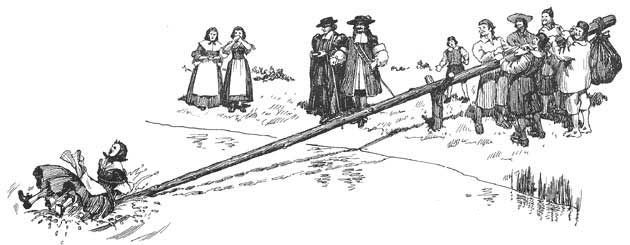
"Balls Torture" was when people were hung by their wrists, and heavy iron balls were attached to the ankles by ropes. The person would be stretched until they were near death, physicians would get them alert and conscious again only to be tortured all over again. This proess would be repeated over and over spanning over 6 hours!!
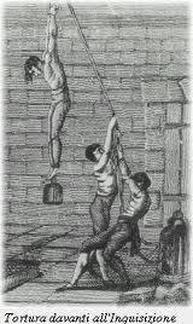
And here are some more pictures to make you feel better about our justice system instead of the tactics of punishment of the Middle Ages!!
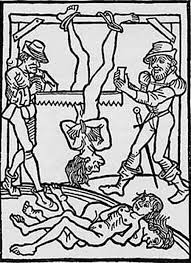



Hope this makes you feel better!! (haha)
The first is "The Boot" which are iron plates tied around the foot with a crank system. The boot would be tightened enough to lacerate the foot and crush the bone. Other variations of this device had spikes inside the boot along with a drill that would drive through the center of the foot. OUCH!

"The Ducking Stool" was a device that was used specifically for women. This could be used for punishment of not so severe crimes like gossiping or more frequently a fool-proof way of disproving witchcraft. The women were strapped onto a chair/stool and the operator would duck the women into freezing cold river water and the length of time they were submerged was all dependent on the severity of the crime!

"Balls Torture" was when people were hung by their wrists, and heavy iron balls were attached to the ankles by ropes. The person would be stretched until they were near death, physicians would get them alert and conscious again only to be tortured all over again. This proess would be repeated over and over spanning over 6 hours!!

And here are some more pictures to make you feel better about our justice system instead of the tactics of punishment of the Middle Ages!!



Hope this makes you feel better!! (haha)
Torture in the Middle Ages
http://www.medieval-life-and-times.info/medieval-torture-and-punishment/
The Middle Ages is known for torture and punishment. Many of the king's castles had dungeons and torture chambers for their enjoyment of watching individuals squirm while being tortured alive until death. Different amounts of torture was used depending of the social status of the individual. Torture was a legal punishment used in order to find out information if the individual would not talk. Individuals were also tortured until their death for disobeying laws. There were quite a few ways of torture throughout Medieval times.
The Breaking Wheel- This is where individuals has their limbs broken off one by one. It was also called the Catherine Wheel, which was named after Saint Catherine of Alexandria, who brought this up as a form of execution in the Middle Ages.
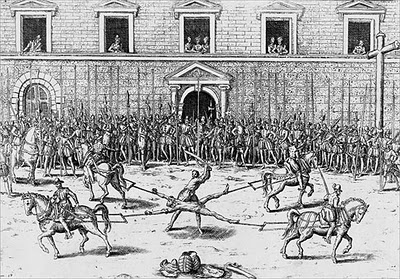
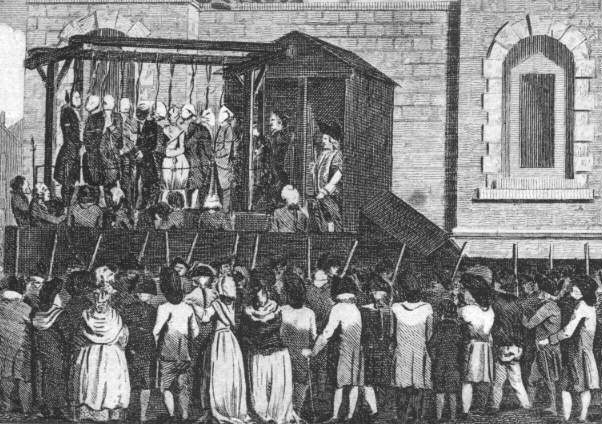




The Middle Ages is known for torture and punishment. Many of the king's castles had dungeons and torture chambers for their enjoyment of watching individuals squirm while being tortured alive until death. Different amounts of torture was used depending of the social status of the individual. Torture was a legal punishment used in order to find out information if the individual would not talk. Individuals were also tortured until their death for disobeying laws. There were quite a few ways of torture throughout Medieval times.
The Breaking Wheel- This is where individuals has their limbs broken off one by one. It was also called the Catherine Wheel, which was named after Saint Catherine of Alexandria, who brought this up as a form of execution in the Middle Ages.
Quartering- This is when the person being tortured has each arm and leg on four separate horses, the horses are then directed in four different directions tearing the limbs from the body.

Hanging- This is one of the most familiar forms of execution, that is when they hang the individual with a rope by their neck, resulting in death by breaking of the neck.

Burning- This is what they did with women they thought were witches, by burning them at the stake. In Middle Ages it was the same they tied prisoners to the stake and lit them on fire while watching them burn to death.

Pressing- This is the death of the person by slowly dropping a heavy object on them slowly crushing their body.

Decapitation- This was the removal of the prisoner's head by use of an ax.

Boiling to death- This was when the prisoner was put in a large cauldron and literally boiled until death.

Subscribe to:
Posts (Atom)
